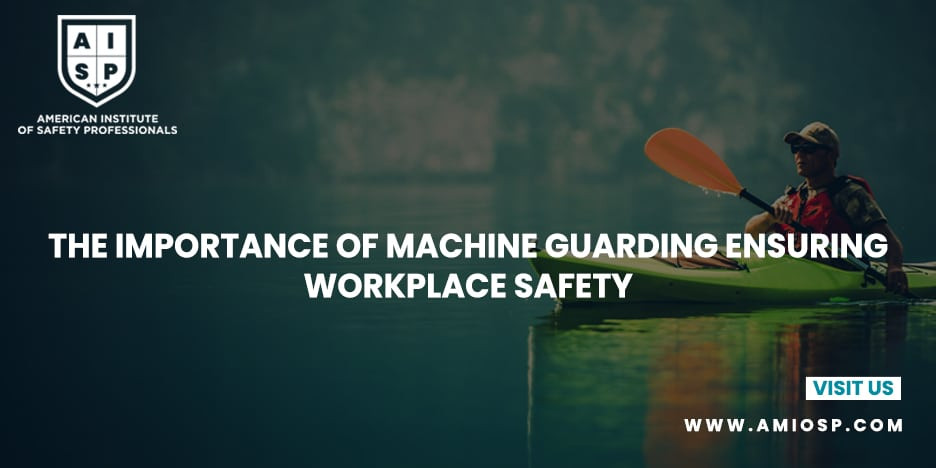In any industrial setting, the safety of employees should
always be a top priority. One crucial aspect of ensuring workplace safety is
machine guarding. Machine guarding refers to the installation of barriers and
safety devices on machinery to protect workers from hazardous moving parts,
sparks, flying debris, and other potential dangers. It plays a vital role in
preventing accidents and injuries, safeguarding both employees and businesses.
This article will delve into the significance of machine guarding and its
impact on workplace safety.
Why is Machine Guarding Important?
- Prevention
of Accidents and Injuries: Machinery accidents can cause severe
injuries, such as amputations, fractures, and lacerations. Machine
guarding acts as a physical barrier that prevents employees from coming
into direct contact with hazardous machine parts, reducing the risk of
accidents and injuries significantly.
- Compliance
with Safety Regulations: Governments and regulatory bodies have
implemented stringent safety regulations to protect workers. Machine
guarding is often a legal requirement in many industries to ensure
compliance with these regulations. Failure to implement adequate guarding
measures can lead to penalties, fines, and legal consequences for
businesses.
- Enhancement
of Productivity: Machine guarding not only safeguards workers but also
promotes productivity. When employees feel safe and secure while operating
machinery, they can focus on their tasks without constant fear of
accidents. This leads to improved efficiency and output in the workplace.
- Protection
against Occupational Hazards: Machines can generate various hazards,
such as rotating parts, sharp edges, electrical currents, and high temperatures.
Properly designed and installed machine guards can effectively minimize
these hazards, protecting workers from potential harm.
- Reduced
Insurance Costs: Implementing comprehensive machine guarding measures
demonstrates a commitment to safety, which can lead to lower insurance
premiums. Insurance providers often offer discounts to businesses that
prioritize workplace safety, reducing financial burdens in the long run.
Types of Machine Guards
Machine guards come in various forms, each designed to
address specific hazards associated with different types of machinery. Here are
some common types of machine guards:
- Fixed
Guards: These are permanent barriers that enclose hazardous machine
parts, preventing access to them. Fixed guards are typically made of sturdy
materials like metal or polycarbonate and are securely attached to the
machine to ensure they cannot be easily removed.
- Interlocked
Guards: Interlocked guards are designed to stop the machine from
operating when the guard is opened or removed. This type of guard ensures
that employees cannot access hazardous areas while the machine is in
operation.
- Adjustable
Guards: Adjustable guards allow flexibility in accommodating various
sizes of materials or products. They can be repositioned or modified to accommodate
different processes or machine setups.
- Self-Adjusting
Guards: These guards automatically move to accommodate the size of the
material being processed. They ensure a close and secure fit between the
guard and the machine, minimizing the risk of exposure to hazardous areas.
- Presence-Sensing
Devices: These devices use sensors to detect the presence of a
worker's body or hand within the hazardous area. When triggered, they stop
the machine to prevent any potential injury.
Implementing Effective Machine Guarding
To ensure effective machine guarding, businesses should
follow these best practices:
- Identify
Hazards: Conduct a thorough assessment of machinery to identify
potential hazards and determine the appropriate guarding measures needed.
This evaluation should involve collaboration between safety professionals,
machine operators, and maintenance personnel.
- Select
Appropriate Guards: Choose the most suitable types of guards for the
specific machinery and associated hazards. Consider factors such as the
size, speed, and complexity of the machines, as well as the tasks
performed by workers.
- Proper
Installation: Guards should be correctly installed, ensuring they are
secure and cannot be easily bypassed or removed. Regular inspections
should be conducted to ensure guards remain intact and in proper working
condition.
- Training
and Education: Provide comprehensive training to employees regarding
machine guarding procedures, including the importance of guards, how to
operate machinery safely, and the consequences of bypassing or disabling
guards.
- Regular
Maintenance: Machine guards should be inspected and maintained
regularly to ensure their effectiveness. Any damaged or malfunctioning
guards should be repaired or replaced promptly.
Conclusion
Machine guarding plays a critical role in ensuring workplace
safety by preventing accidents, protecting workers from hazards, and promoting
compliance with safety regulations. Businesses that prioritize machine guarding
not only create a safer work environment but also enhance productivity, reduce
insurance costs, and mitigate legal risks. By understanding the importance of
machine guarding and implementing effective measures, companies can safeguard
their most valuable asset—their employees—and create a culture of safety in the
workplace.












0 comments
No Comments